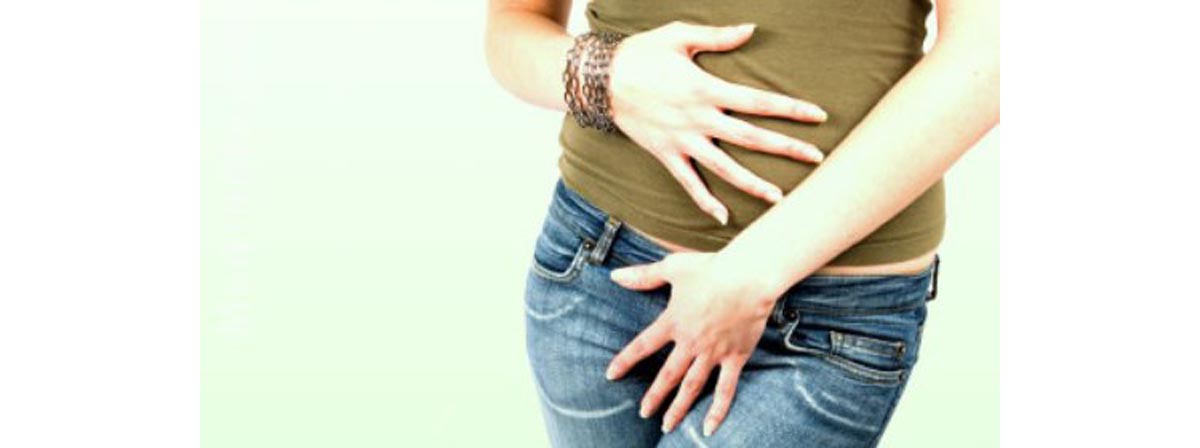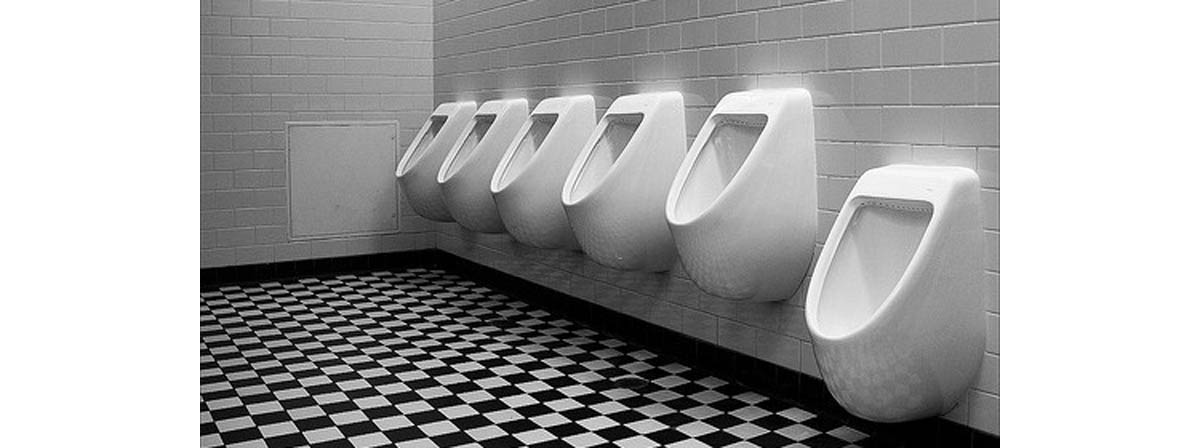An average, healthy, person has to void urine around seven to eight times a day. When you think back, you'll realize that that used to be true for you, too. But off late, you have been noticing that this frequency has been steadily increasing. Your visits to the washroom first increased during the day time. But now the condition is such that you have to get up every half an hour during night as well.
Not only is your sleep being disturbed, you tend to remain in a foul mood throughout the day. This problem of yours has severely jeopardized your social life too. You went to your family doctor who prescribed you some antibiotics, thinking that you were dealing with a simple case of urinary tract infection. But you didn’t get any respite despite completing the entire course of antibiotics. You went to the doctor again. This time you were referred to a specialist who, after conducting several tests, diagnosed your condition as Interstitial Cystitis.
What's next?

What is Interstitial Cystitis?
Now what exactly is interstitial cystitis and why is it that you had to suffer from this condition? You can take heart from the fact that in the United States alone, more than 4 million people suffer from the same plight as yours. Doctors term interstitial cystitis as a chronic bladder condition.
The most common symptoms of interstitial cystitis are increased frequency of micturition (urination) and a sense of urgency attached to it.
Due to the inflammation of the wall of the urinary bladder, the muscles of the bladder wall stiffen. Hence, they lose their capacity to expand in order to hold more urine. As the bladder cannot expand to its normal capacity, it leads to a sensation of full bladder earlier, which, in turn, causes the symptoms of interstitial cystitis. In 90 percent of patients who suffer from this condition, the bladder wall is characterized by multiple pin point hemorrhagic spots called glomerulations. In 10 percent of these patients, besides the spots of bleeding, ulcers known as Hunner’s patches can also be seen in the lining of the bladder.
Women are more likely to suffer from interstitial cystitis
Being a woman increases your likelihood of developing interstitial cystitis. According to the latest statistics available, around 3.3 million women in United States (that is 2.7% of the entire population) above the age of 18 suffer from this condition. On the other hand, about 1.6 million men in US (a much lower 1.3% of the entire population) between the age of 30 and 79 suffer from interstitial cystitis. However, there is no medical explanation for this discrepancy.
Causes Of Interstitial Cystitis
Although nothing can be said for sure, several theories have been promulgated by the scientific community regarding the possible cause of interstitial cystitis. They include:

- A defect in the cell lining of the wall of the bladder. Patients who have interstitial cystitis tend to have anti-proliferative factor (APF) in their urine which prevents the growth of cells of the bladder lining. So, harmful substances present in the urine come in contact with the bladder wall.
- Autoimmune disorder
- Changes in the nerves present in the bladder
Symptoms of interstitial cystitis
The two most important symptoms of the disease include a sense of urgency and frequent micturition. It is said that patients who suffer from interstitial cystitis may have to pass urine as often as 60 times in a day. Besides these two important symptoms, patients often complain of pain and discomfort in the lower abdomen. Women often complain that the pain increases during the time of menstruation and while having sex. Men who suffer from this condition complain of pain in the penile and scrotal regions. The symptoms appear without warning, at any age, and then may go into spontaneous remission. However, they usually return within 8 to 12 months.
Diagnosis of interstitial cystitis
The disease is often diagnosed by ruling out other conditions like urinary tract infection, sexually transmitted diseases, vaginal infection, endometriosis, kidney stones and bladder cancer. Once these diseases are ruled out, several diagnostic tests are performed. They include:
- Urine examination and culture: This is specifically done to rule out any form of infection, which would point to an alternative diagnosis. Sterile urine increases the possibility of interstitial cystitis.
- Cystoscopy after distension of the bladder: The bladder is distended with the help of a liquid or a gas under anesthesia. The bladder wall is then examined with the help of a cystoscope to observe the presence of glomerulations and Hunner’s patches, which point to interstitial cystitis.
- Biopsy of the bladder wall: The bladder wall is biopsied to rule out the presence of any cancer.
Thus, we see that the diagnosis of interstitial cystitis is done mainly on the basis of excluding other conditions.
Treatment of interstitial cystitis
There is no permanent cure for interstitial cystitis, which is considered to be a chronic condition. However, there are various modalities of treatment which can provide some relief from the symptoms. These ways to manage interstitial cystitis include:
Bladder distension
Distending the bladder often provides relief from the problem of increased frequency and urgency of micturition. It is said that distension temporarily increases the bladder's capacity to hold urine. Hence, the symptoms abate for four to six weeks and the patient gains temporary relief.
Bladder instillation
In this technique, the bladder is filled with a solution that contains dimethyl sulfoxide (DMSO) for 10 to 15 minutes and is then emptied completely. The process is repeated every other week for six to eight weeks. Relief from symptoms is usually observed 3 to 4 weeks after the first cycle of 6 to 8 weeks of instillation.
Pentosan polysulfate
This medicine, which has been approved by the FDA for the treatment of interstitial cystitis, provides some relief from the pain associated with the disease. It is administered in the dose of 100 mg three times a day. It however, does not begin to show its action until four to six months after starting the therapy, and some patience is required.
Other medications
Other medicines that have been used to treat the symptoms of interstitial cystitis with a varying rate of success include antihistamines, and surprisingly tricyclic antidepressants. Aspirin and ibuprofen may be used initially to get relief from the discomfort associated with interstitial cystitis. In patients with severe pain, narcotic analgesics like acetaminophen along with codeine may be helpful.
Transcutaneous nerve stimulation (TENS)
The TENS machine, when placed on the lower back, generates mild electrical impulses which stimulate the nerves innervating the bladder wall. This increases the blood flow to the bladder, blocks pain and strengthens the muscles in the bladder wall. Some patients notice great improvements, while others are not helped by the TENS machine.
Surgery
This is usually done as a last resort wherein, scarred and inflamed tissue present in the bladder wall is removed.
Experts have warned that whatever be the treatment modality, it takes time to provide some relief from the symptoms. Therefore, the patients are advised to be patient. Moreover, no form of treatment can cure the disease permanently. Hence, it is imperative to set your expectations realistically.
- “Prevalence of symptoms of bladder pain syndrome/interstitial cystitis among adult females in the United States,” by Berry SH, Elliott MN, Suttorp M, et al, published in 2011 in The Journal of Urology, accessed on May 4, 2013
- “Prevalence and psychosocial correlates of symptoms suggestive of painful bladder syndrome: results from the Boston area community health survey,” by Link CL, Pulliam SJ, Hanno PM, et al, published in 2008 in the Journal of Urology, accessed on May 4, 2013.
- Photo courtesy of The Natural Bladder by Picasa : picasaweb.google.com/lh/view?q=bladder+&uname=109008901828086469253&psc=G&filter=1#5805133600491277714
- Photo courtesy of Rupert Ganzer by Flickr : www.flickr.com/photos/loop_oh/6277684962/


Your thoughts on this